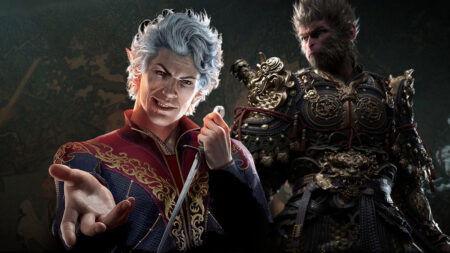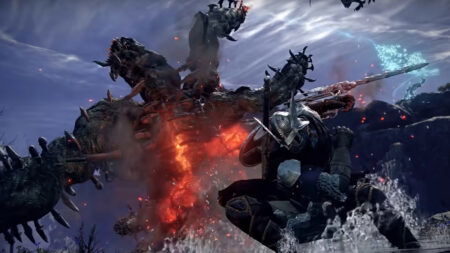Title: Layers Of Fear
Version Tested: PC
Available on: PC,
Developer: Bloober Team
Publisher: Aspyr Media
Genre: Horror, Adventure, Walking Simulator, Indie
Official Site: https://layersoffear.com/
Release Date: February 15th, 2016
Where to Buy: Steam, GOG, Playstation Store, Xbox Store, Humble Store
One of the worst moments of 2015 (at least in the game industry) had to be the cancelation of Silent Hills and the removal of the PT Demo from the Playstation Store. Fans bemoaned Konami for the hundredth time that year and longed for what could have been. Bloober Team hearing the cries rose up from the ashes of their previous release, Basement Crawl, to give us Layers Of Fear. A game that capitalizes on some of the best ideas of PT to give us one of the better horror games I’ve played in quite some time. I found Layers Of Fear to be a blisteringly fast haunted house ride, full of surprises and mind-bending rooms.

Layers Of Fear is gorgeous, in both visuals and audio. The soundtrack, while mostly minimal, is haunting and melancholic. It provides just enough of a soundscape to add a dimension beyond the in-game effects. The sounds like the crack of thunder outside the window or a fist pounding on the door aid in the game’s ability to startle and perturb your senses. The only issue with audio is sometimes a sound will suddenly clip out while you walk into another room, and clip back in when you return. It’s not a huge shortcoming, but in a game that relies on its ability to immerse you in its world, it works against it by reminding you it’s a game. The voice acting wavers between being fine, and maybe just a tad too campy at times. While not entirely a technical achievement, especially since there are some slight frame rate issues, the art design of the Victorian-era mansion is incredible. Bloober Team nailed the aesthetic of the era. Touches like the hand-operated elevator, that takes you from one dreaded floor to the other, to the sturdily made antique furniture that fills the house, they’re all excellent and help lend a real sense of time and place to the mansion. As a player, you will feel immersed in the 19th-century aesthetic. Also, entirely worth mentioning, are the paintings. The paintings that cover the walls blur the line between being alluring and repulsive, drawing your gaze and evoking feelings of distrust. The color is also effectively used, and the juxtaposition of bright greens, reds, oranges, and blues expertly draw your eye to certain horrors, or aid in your navigation through the mind-bending mansion. The art assets aren’t simply surface level beauty either, they aid in telling the story.
The environmental storytelling is a commendable showcase for developer Bloober Team’s attention to detail. Nearly every room gives you a bit of insight into the grander narrative of the game. A wine bottle spilled over a sofa, accentuating the protagonists alcoholism, discarded drawings highlighting the artist’s obsession with perfection, or a child’s foreboding doodle hinting at signs of domestic abuse. Needless to say, the game is full of detail. Further adhering to the detail in the game are the notes scattered around the mansion. The notes aren’t arbitrarily scattered around for the sake of telling a story or following the trends of most “walking simulators” these notes have a logical and narrative reason for being there. The game requires you to dig through draws, cabinets, tables, and desks to find them, which adds to their sense of naturalness. The notes don’t feel like a cheap way of laying on the exposition, and for that, I applaud the developers. The story itself isn’t wholly original but embraces its own cliches in a way that lend itself thematically to both the gameplay and the character. It’s rewarding uncovering parts of the tale through the environment, as well as the notes, the drawings, and the internal character monologues. As a player, you will feel a bit like a detective piecing the parts together to further your understanding of the twisted happenings going on in the mansion. While the story isn’t exactly subtle, there’s just enough ambiguity left for the player to piece some of the parts together, and I look forward to the community theories. I was also a fan of the ending, I could see how some people might feel deflated by it, I found it to be the proper way to conclude the story as well as keeping with the themes established in the story and the gameplay.

The objective of each chapter of Layers Of Fear is to find the unique art supplies needed to create the painters magnum opus. Once found the player will go through a door leading back to the artist’s workshop. Here the player will then add it to the unfinished painting, and watch through a stunning animation, the painting begin to take shape. This creates a satisfying gameplay loop. A gameplay loop that visually rewards player progress, as well as create a bit of cohesion in an otherwise disjointed jaunt through the shifting mansion. The minute to minute gameplay through the mansion is best described as a first-person narrative exploration game through a twisted and haunted funhouse of horror. It’s fair to call the game a “fun house simulator.” The layout will constantly shift and evolve around you. Doors will disappear, hallways will go on forever, a passage you went through before will suddenly become a brick wall. Paintings will come to life, ooze into the floor, or completely shift into something sinister. Some rooms will have a slight puzzle element to them, and the player will have to figure out a simple puzzle in order to proceed to the next room.
The surreal mansion is the main draw of the game, and for better or worse the game lives and dies by it. The pacing is relentless. Nearly every room has something to shock you or disturb your senses. I personally found this to work with the notion the player character is losing his grip on reality. You can’t trust your own senses. Sounds mislead you, your sense of direction and place is off, it feels like a nightmarish trek. I can certainly understand some people becoming desensitized to it, as well as some being completely turned off by the shock a minute gameplay. Hitchcock this is not. The game also has some diminishing returns on some of its shock value and tricks, especially in the final sequence of the game that has you questionably locating checker pieces to solve a puzzle. This section felt out of place to me, as well as a tad directionless. It furthermore did a poor job of expressing what the player had to do. This sequence stands out in part due to how up until this point the game is adequate in its ability to subtly guide players attention to the solutions in the environment.
Layers Of Fear is $20 dollars and about 3-4 hours long with three different endings. I found the length more or less the right amount, especially as the game began to wind down towards the end. I do believe the price is a fair representation of what you get. The issues I had with Layers of Fear did little to hamper my enjoyment of the game. Layers Of Fear absolutely succeeds at what it sets out to do and if you are even a casual fan of horror you owe it to yourself to check it out. It is one heck of an experience.
[embedyt] https://www.youtube.com/watch?v=ihKltvEUdNg[/embedyt]
- Gameplay: Limited gameplay, exploration, and clue finding are solid, if not shallow.
- Graphics: Gorgeous art design with some excellent use of colors
- Sound: The soundtrack is minimal, yet extremely haunting and melancholic. The sound design itself is effective and the game benefits from being played with a good pair of headphones.
- Presentation: Playing as a crippled and mentally unstable painter is nailed in every aspect of its presentation. From graphics to audio, even to the painters noticeable limp when he walks.
[review]







